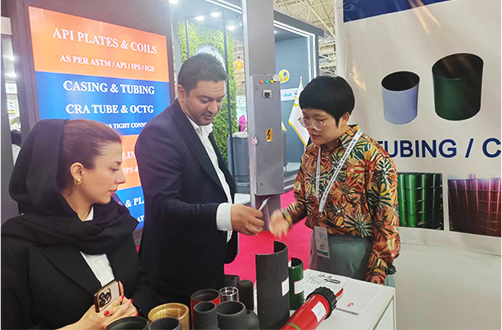- Afrikaans
- Albanian
- Amharic
- Arabic
- Armenian
- Azerbaijani
- Basque
- Belarusian
- Bengali
- Bosnian
- Bulgarian
- Catalan
- Cebuano
- Corsican
- Croatian
- Czech
- Danish
- Dutch
- English
- Esperanto
- Estonian
- Finnish
- French
- Frisian
- Galician
- Georgian
- German
- Greek
- Gujarati
- Haitian Creole
- hausa
- hawaiian
- Hebrew
- Hindi
- Miao
- Hungarian
- Icelandic
- igbo
- Indonesian
- irish
- Italian
- Japanese
- Javanese
- Kannada
- kazakh
- Khmer
- Rwandese
- Korean
- Kurdish
- Kyrgyz
- Lao
- Latin
- Latvian
- Lithuanian
- Luxembourgish
- Macedonian
- Malgashi
- Malay
- Malayalam
- Maltese
- Maori
- Marathi
- Mongolian
- Myanmar
- Nepali
- Norwegian
- Norwegian
- Occitan
- Pashto
- Persian
- Polish
- Portuguese
- Punjabi
- Romanian
- Russian
- Samoan
- Scottish Gaelic
- Serbian
- Sesotho
- Shona
- Sindhi
- Sinhala
- Slovak
- Slovenian
- Somali
- Spanish
- Sundanese
- Swahili
- Swedish
- Tagalog
- Tajik
- Tamil
- Tatar
- Telugu
- Thai
- Turkish
- Turkmen
- Ukrainian
- Urdu
- Uighur
- Uzbek
- Vietnamese
- Welsh
- Bantu
- Yiddish
- Yoruba
- Zulu
Exploring J55 Coupling Techniques for Enhanced Oilfield Connections and Performance
Understanding J55 Coupling An Essential Component in Oil and Gas Industries
In the oil and gas industry, the extraction and transportation of hydrocarbons demand quite a few specialized components designed to withstand extreme environmental conditions and high-pressure situations. One such crucial element is the J55 coupling. This article explores what J55 is, its specifications, applications, and why it is a vital asset in the exploration of oil and gas.
What is J55?
J55 alloy is one of the various grades of carbon steel commonly used in the manufacturing of casing and tubing. It is often utilized in drilling applications, where the ability to withstand significant pressure and temperature variations is imperative. J55 couplings are specifically designed to join sections of J55 casing, which is a tubular product essential for maintaining the integrity of a wellbore during drilling operations.
Specifications of J55 Coupling
The primary specifications for J55 coupling include
1. Material Composition J55 steel is primarily made up of carbon, manganese, and small amounts of sulfur and phosphorus. The specific chemical properties enhance its durability and performance. 2. Mechanical Properties J55 steel coupling exhibits excellent tensile strength and yield strength. The minimum yield strength is generally around 55,000 psi, making it suitable for the diverse pressures encountered in oil and gas environments.
3. Dimensional Standards J55 couplings typically comply with the American Petroleum Institute (API) standards, ensuring they are manufactured to meet specific dimensions and tolerances suitable for effective utilization in drilling operations.
4. Coating Often, J55 couplings are coated with protective materials to enhance their resistance against corrosion, particularly when used in hostile environments where exposure to brine or other corrosive substances is common.
Applications of J55 Coupling
j55 coupling

J55 couplings serve many critical functions in the oil and gas sector
1. Casing Installation During the drilling process, J55 couplings connect lengths of casing pipe, providing structural support to the wellbore. This is essential for preventing it from collapsing and ensuring safe drilling.
2. Well Integrity By facilitating the proper alignment and connection of casing sections, J55 couplings help maintain the integrity of the well, reducing the risk of blowouts or unexpected pressure releases.
3. Fluid Transportation They enable the effective transportation of various fluids, including oil, gas, and water, through the wellbore. Properly installed couplings reduce leakage, ensuring efficient fluid movement.
4. Safe Operations Using J55 couplings that meet industry standards is crucial for operational safety. The coupling design aids in mitigating risks associated with high-pressure and high-temperature environments.
Importance of Quality and Compliance
In the oil and gas industry, investing in quality components is non-negotiable. The failure of couplings can lead to catastrophic results, including leaks, environmental damage, and significant financial loss. Therefore, it is critical to procure J55 couplings from reputable manufacturers who comply with established standards. Application-specific modifications might be required, and such adjustments should only be made by experienced professionals.
Conclusion
The J55 coupling represents a small yet significant component within the vast and intricate world of oil and gas drilling operations. Its ability to interconnect casing sections safely and effectively plays an essential role in ensuring the success and safety of drilling activities. With advancements in engineering and manufacturing techniques, J55 couplings continue to evolve, maintaining their importance as a dependable choice for industry professionals. Understanding the specifications, applications, and importance of J55 couplings can empower stakeholders in the oil and gas industry to make informed decisions, ensuring safe and productive operations. Whether for new drilling projects or maintenance of existing wells, J55 couplings remain an indispensable asset in the energy sector.
-
Tubing Pup Joints: Essential Components for Oil and Gas OperationsNewsJul.10,2025
-
Pup Joints: Essential Components for Reliable Drilling OperationsNewsJul.10,2025
-
Pipe Couplings: Connecting Your World EfficientlyNewsJul.10,2025
-
Mastering Oilfield Operations with Quality Tubing and CasingNewsJul.10,2025
-
High-Quality Casing Couplings for Every NeedNewsJul.10,2025
-
Boost Your Drilling Efficiency with Premium Crossover Tools & Seating NipplesNewsJul.10,2025







